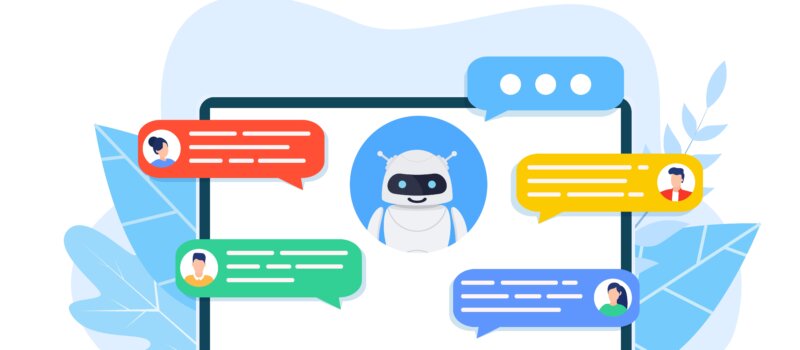Small businesses face a unique challenge when it comes to customer communication. Every call matters, yet hiring full-time reception staff may not be realistic due to budget and staffing limitations. Missed calls often lead to missed opportunities, making it essential to find a reliable and cost-effective solution.
An AI receptionist provides exactly that. By handling incoming calls, scheduling appointments, and answering common questions, AI technology frees up employees to focus on higher-value work. For small businesses looking to improve efficiency and customer experience without expanding headcount, an AI receptionist is a practical and scalable option.
Quick Takeaways
- An AI receptionist for small business operations improves efficiency by managing calls, scheduling, and frequently asked questions.
- Successful setup involves defining business needs, choosing the right provider, and integrating with existing systems.
- AI receptionists provide cost savings, consistent customer experiences, and reliable 24/7 coverage.
- Continuous monitoring and updates ensure the system delivers long-term value as the business grows.
What Is an AI Receptionist?
An AI receptionist is a virtual assistant powered by artificial intelligence that manages customer interactions by phone or chat. It uses natural language processing to understand inquiries and provide relevant responses. Unlike traditional answering services, AI receptionists integrate directly with business systems such as CRMs and scheduling tools, creating seamless workflows.

Typical functions include routing calls, booking appointments, answering FAQs, and capturing leads. These features ensure that no customer communication is overlooked and that responses remain consistent regardless of the time of day.
Benefits of an AI Receptionist for Small Business
Cost Savings
Hiring additional staff to cover every call can be expensive, especially for small businesses with limited budgets. An AI receptionist reduces these costs while providing reliable coverage during and after business hours. Many businesses find that the system pays for itself by preventing missed opportunities and capturing more leads.
Improved Customer Service
AI receptionists ensure no call goes unanswered. Customers receive immediate responses, whether they are scheduling an appointment, asking about hours, or requesting basic service details. This responsiveness builds trust and encourages repeat business.
Increased Productivity
When routine tasks are automated, employees can concentrate on activities that drive growth. Sales teams can focus on closing deals, and service teams can devote more time to complex customer needs. Reducing repetitive work also lowers stress and improves employee morale.
Scalability
As call volumes grow, AI systems expand easily without requiring additional hires. Software-based upgrades provide more advanced features as the business evolves, allowing small businesses to scale their customer communication systems smoothly.
How to Set Up an AI Receptionist for Your Small Business
1. Define Business Needs
Start by identifying the functions your AI receptionist should perform. This might include routing calls, booking appointments, handling FAQs, or capturing contact information for leads. Clear priorities guide the provider selection process and ensure the system aligns with business goals.
2. Choose the Right Provider
Select a vendor that offers AI receptionist services designed for small businesses. Key features to look for include natural language processing, CRM and calendar integration, and customization options. Reliable support and easy scalability should also factor into the decision.
3. Integrate with Existing Systems
Integration is critical for seamless communication. Ensure the AI receptionist connects with your existing phone system, CRM, and scheduling platforms. This connectivity enables accurate call logging, streamlined appointment booking, and efficient data capture, reducing manual work for employees.
4. Customize and Train the AI
AI systems need to reflect your business’s voice and policies. Provide detailed information on operating hours, services, pricing, and frequently asked questions. Training the AI with real examples improves accuracy and ensures customers receive consistent, brand-aligned responses.
5. Test Before Full Deployment
Run pilot tests internally before launching the AI receptionist for customers. Have employees interact with the system to identify missteps or confusing responses. Adjust scripts and workflows based on feedback to refine performance.
6. Monitor and Optimize Performance
Once deployed, track how the AI handles calls and requests. Review customer feedback and analyze call data to assess effectiveness. Regular monitoring allows businesses to adjust scripts, improve accuracy, and maintain high-quality service as customer needs evolve.

Common Challenges and How to Overcome Them
Customer Reluctance
Some customers may hesitate to interact with an AI system. Offering seamless handoffs to live staff ensures those customers still feel supported. This hybrid approach balances efficiency with personalized service.
Integration Issues
Legacy phone systems or outdated CRMs may complicate integration. Choosing providers with robust technical support and compatibility reduces disruptions during setup. Many cloud-based AI systems are designed with flexibility to overcome these challenges.
Accuracy and Tone
AI technology can occasionally misinterpret requests or use phrasing that feels too robotic. Regular updates, ongoing training, and script adjustments improve accuracy and tone. Businesses should view the AI receptionist as a system that evolves over time, not a one-time setup.
Best Practices for Maximizing ROI
- Blend AI with Human Support: Use AI for routine inquiries while directing complex requests to live staff. This balance improves customer satisfaction.
- Keep Information Current: Regularly update business details in the system so customers always receive accurate responses.
- Analyze Insights: Use call data from the AI receptionist to identify common questions, customer pain points, and potential service improvements.
- Train Employees to Collaborate with AI: Ensure staff understand how to work alongside the AI system so transitions between human and AI support feel seamless.
When small businesses apply these practices consistently, they maximize the value of their AI receptionist and ensure it continues to support operational efficiency and customer satisfaction.
Strengthen Communication with an AI Receptionist
An AI receptionist for small business operations provides cost savings, improved customer service, and scalable support. By defining business needs, selecting the right provider, and continually refining the system, small businesses can create reliable communication processes that grow alongside their operations. This technology not only prevents missed opportunities but also enhances the customer experience, ensuring small businesses remain competitive.
Enhance your customer communication with an AI receptionist built for small business needs. Intermedia’s cloud solutions help you streamline calls, reduce costs, and deliver consistent experiences. Request a demo today.
November 11, 2025
Explore other posts on these topics: AI




